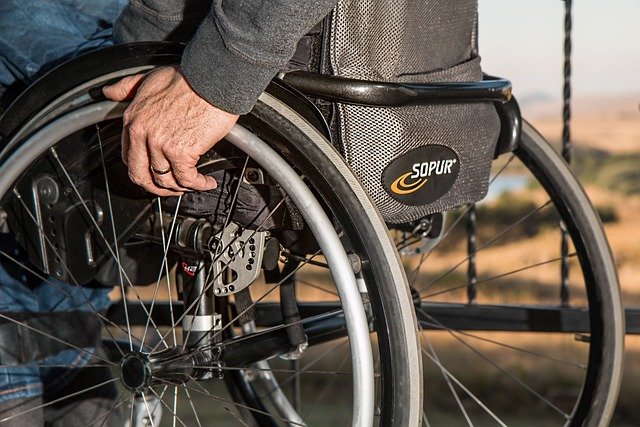2-Door Toyota Tacoma 4x4 — Overview, Capabilities, and Ownership Guide
Compact dimensions, a hardy frame, and proven drivetrains have made the 2-door Toyota Tacoma 4x4 a favorite for work sites and weekend trails. This guide explains what the two-door layout typically includes, how the 4x4 system works, notable trims and options, maintenance insights, and what to check before you buy or modify one.

The 2-door Toyota Tacoma 4x4 blends maneuverability with utility, offering a straightforward cabin and a practical bed within a compact footprint. In many markets and model years, the two-door layout refers to the Regular Cab, while later generations in some regions moved to Access and Double Cabs. For shoppers and owners, understanding which years offered a true two-door 4x4, plus how configurations and equipment varied, is key to making a well-informed decision and maintaining long-term reliability.
Model overview and cab/bed configurations
Across generations, the two-door Tacoma most commonly appears as a Regular Cab with a single row of seating and a focus on payload and wheelbase efficiency. In North America, true Regular Cab models were offered mainly in the first and second generations, with availability tapering off in later years as buyers favored larger cabs. Bed lengths typically centered on a 6-foot configuration for Regular Cab 4x4 models, providing a useful balance of cargo space without excessive overhang.
Depending on region and year, the two-door 4x4 package may differ in ride height, springs, and axle ratios. Earlier trucks emphasized a simple, rugged layout with manual locking hubs on some markets and a part-time transfer case. Later models standardized automatic locking hubs and retained a straightforward interior with durable materials intended for daily work, trail duty, or light overlanding builds.
Engine, drivetrain, and off-road capability
Historically, the 2.7-liter four-cylinder has been the most common engine in two-door Tacoma 4x4 models, favored for durability and adequate torque at lower rpm. In some generations and markets, a V6 was available, though it was more prevalent in extended or double-cab trucks. Transmissions have included 5-speed or 6-speed manuals and 4-speed or 5-speed automatics, depending on model year.
A part-time 4WD system with 2H, 4H, and 4L modes is typical, paired with a two-speed transfer case. Many off-road oriented trims or packages add features like a locking rear differential, additional skid plates, and tuned shocks for rough terrain. With a short wheelbase and relatively light nose, the two-door Tacoma can feel nimble on technical trails, and its straightforward mechanical layout simplifies service and upgrades for enthusiasts.
Trim, features, and factory options
Common trims for two-door 4x4 models have included utility-focused SR or base trims, the more comfort-oriented SR5, and off-road themed packages such as TRD Off-Road in certain years. Factory options may include limited-slip or locking rear differentials, tow packages with supplemental cooling, underbody skid plates, all-terrain tires, and upgraded audio or connectivity depending on generation.
Interior equipment ranges from vinyl and cloth seats to more feature-rich cabins with touchscreen infotainment on newer models. Even so, the two-door layout generally emphasizes function over luxury, with easy-to-clean surfaces, straightforward controls, and good outward visibility that helps on narrow trails or crowded worksites.
Maintenance, reliability, and common issues
Routine maintenance is straightforward. Regular fluid changes for engine, transmission, transfer case, and differentials are crucial, especially if the truck sees frequent water crossings or towing. Inspect and replace filters on schedule, and keep an eye on accessory drive belts and cooling system components. On manual transmissions, clutch wear will track with usage and load; on automatics, timely fluid service helps preserve shift quality.
Known issues to watch vary by generation. Earlier Tacomas in rust-prone climates have faced frame corrosion concerns, with service campaigns in some markets; any prospective purchase should be inspected thoroughly for structural rust. Other items occasionally reported include lower ball joint wear, leaf spring recalls on certain years, front differential or transfer case seal seepage, and exhaust manifold cracks on some four-cylinder engines. The 2.7-liter four-cylinder is generally regarded as robust when maintained, and many owners report long service life with consistent oil changes and cooling system care.
Buying tips, inspection checklist, and aftermarket upgrades
Start with documentation. Service records, recall completion, and a clear title history help establish a baseline. During inspection, look closely at the frame rails, crossmembers, and suspension mounting points for rust or damage. Check for uneven tire wear that might indicate alignment or bushing issues. Test 4WD engagement in 4H and 4L, listen for driveline noises, and verify that the rear differential lock, if equipped, engages as expected on a suitable surface. Examine the bed for signs of heavy overloading, look for fluid leaks under the engine and transmission, and review clutch engagement on manual models.
For upgrades, prioritize reliability and protection before cosmetic changes. Quality all-terrain tires in a sensible size, recovery points, and basic skid plates can add capability without overtaxing the drivetrain. If you add weight with armor or accessories, consider spring and shock tuning and keep an eye on braking performance. Re-gearing may be appropriate for significantly larger tires, and regular alignment checks help maintain drivability. Always confirm that modifications comply with local regulations and do not exceed the truck’s rated capacities.
In summary, the 2-door Toyota Tacoma 4x4 offers a compact, practical platform with a reputation for durability, especially in four-cylinder, part-time 4WD configurations. Understanding the year-by-year availability, verifying condition with a careful inspection, and focusing on balanced maintenance and upgrades can yield a dependable truck for daily use and trail exploration.




